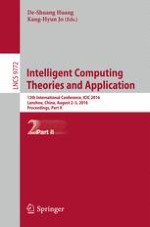2016 | OriginalPaper | Chapter
Speech Denoising Based on Sparse Representation Algorithm
Authors : Yan Zhou, Heming Zhao, Xueqin Chen, Tao Liu, Di Wu, Li Shang
Published in: Intelligent Computing Theories and Application
Publisher: Springer International Publishing
Activate our intelligent search to find suitable subject content or patents.
Select sections of text to find matching patents with Artificial Intelligence. powered by
Select sections of text to find additional relevant content using AI-assisted search. powered by
